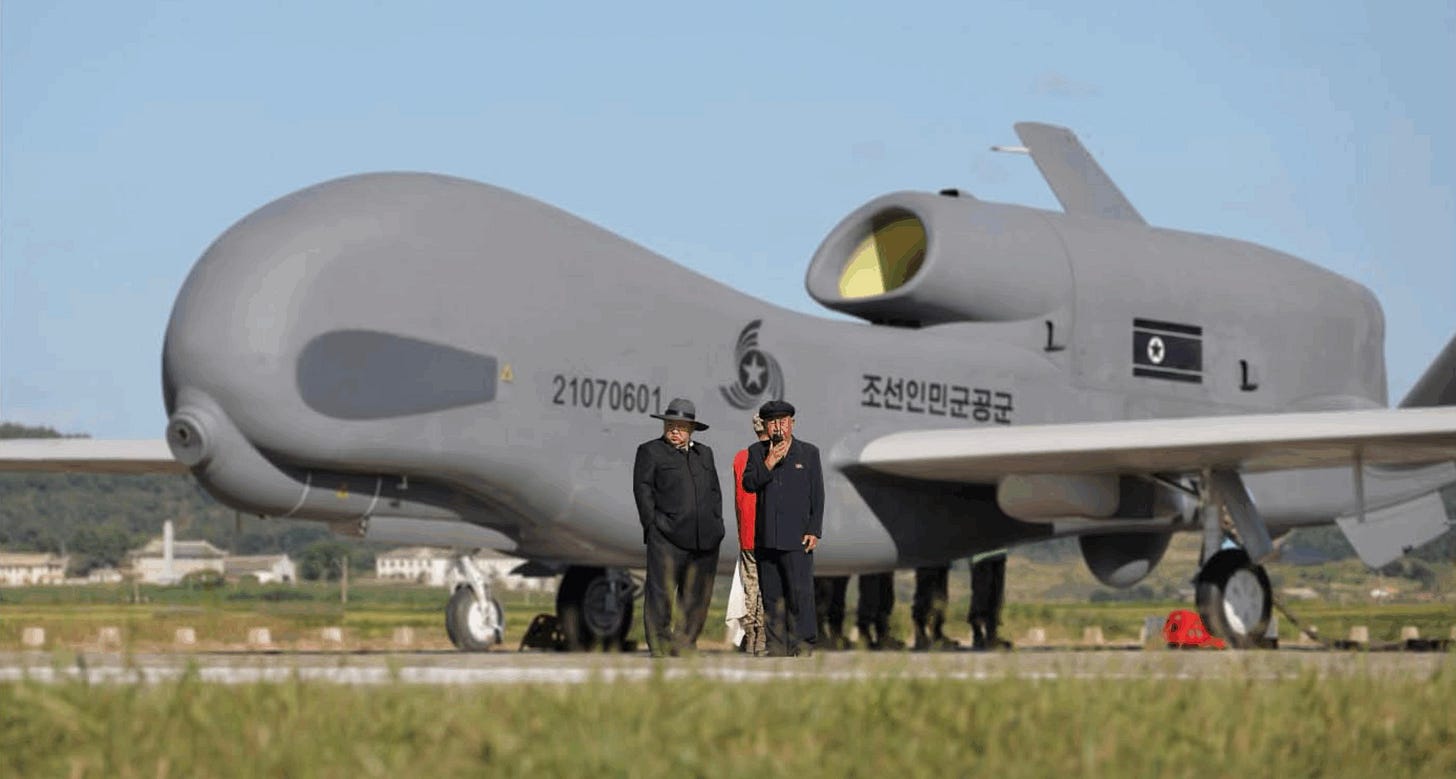North Korea Makes AI-Enabled Drones a Top Military Priority
A Strategic Shift in Pyongyang's Military Strategy
North Korea's AI-Enabled Drone Ambitions
On 18 September 2025, North Korean leader Kim Jong Un declared the development of artificial intelligence (AI)-powered military drones a "top priority" in modernizing his country's armed forces. This announcement was made during a visit to the Unmanned Aeronautical Technology Complex in Pyongyang, and appears to be a deliberate decision to enhance North Korea’s military capabilities. The shift toward integrating AI technology into their military strategy is a significant development and will greatly influence drone warfare in the region.

During the inspection, Kim oversaw tests of reconnaissance and tactical drones, including the Kumsong-series tactical attack UAVs. Consequently, Kim called for the accelerated development of artificial intelligence in these systems and announced plans to expand domestic production, enabling the country to rely less on foreign parts.
In March 2025, Kim supervised the use of AI in suicide-attack drones.
What We Know
Types of drones tested: A mix of long-range reconnaissance UAVs and tactical multipurpose drones for strike missions.
AI integration: The goal was to make drones less dependent on operators and more capable of navigating, targeting, and making decisions independently.
Domestic production push: Kim ordered factories to mass-produce drones and improve assembly lines to improve state self-sufficiency.
Public messaging: State media emphasized Kim’s satisfaction with the tests and demonstrated the “excellent combat effectiveness of Kumsong-series tactical attack drones.”

What’s Less Clear
How advanced the AI systems actually are.
Whether North Korea’s AI-automated drones have already been deployed in the field or remain in the test stage.
How these drones compare to those developed in South Korea, the United States, or China.
North Korean Drone Rebranding and Why it Matters
This is the first time North Korean state media has referred to its combat UAV series as “Kumsong.” Previously, the attack drones revealed in 2023 were called “Saetbyol-9,” while reconnaissance drones were named “Saetbyol-4.”
Both earlier models appeared to be close copies of the U.S. MQ-9 Reaper (attack role) and the Global Hawk (reconnaissance). Since then, North Korea has developed a larger version of the Saetbyol-4.
Recent test photos reveal the new Saetbyol-4 variant with slight but notable design changes, including additional vents positioned on top and along the sides of the exhaust port.
According to analyst Hong Min of the Korea Institute for National Unification, the new “Kumsong” brand likely connects to the suicide drones North Korea unveiled in August 2024, hinting that Pyongyang is trying to unify its drone program under a single identity.
While the drones still seem to draw heavily on foreign designs, the minor engineering tweaks show growing confidence in North Korean innovation. Even if they lag behind U.S. or South Korean systems, these drones can still play a disruptive role, especially in swarming or suicide missions where cost and numbers matter more than cutting-edge tech.
For now, it remains uncertain whether these drones are as advanced as claimed. However, it is clear that North Korea believes the future of warfare will be unmanned, automated, and fast.

